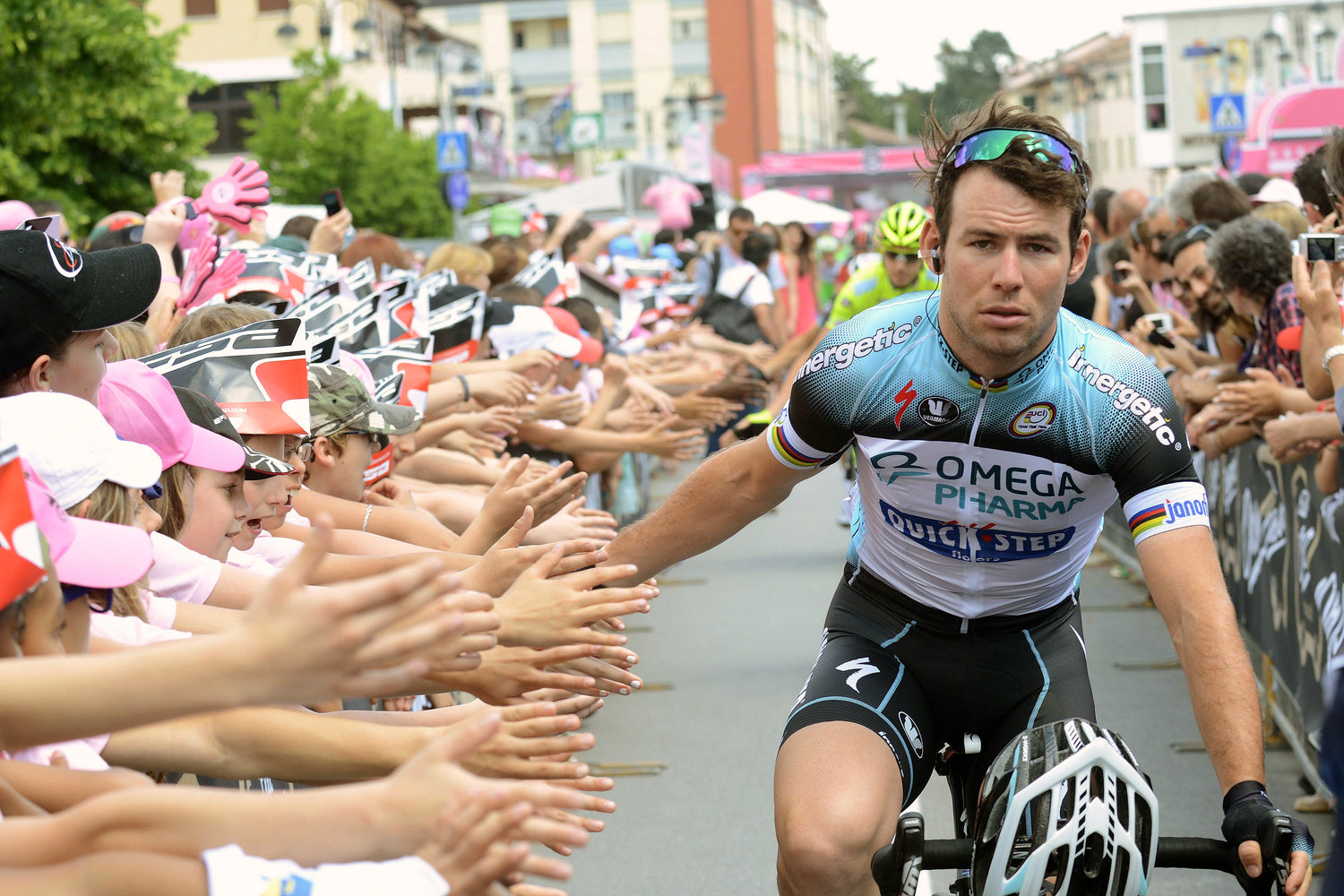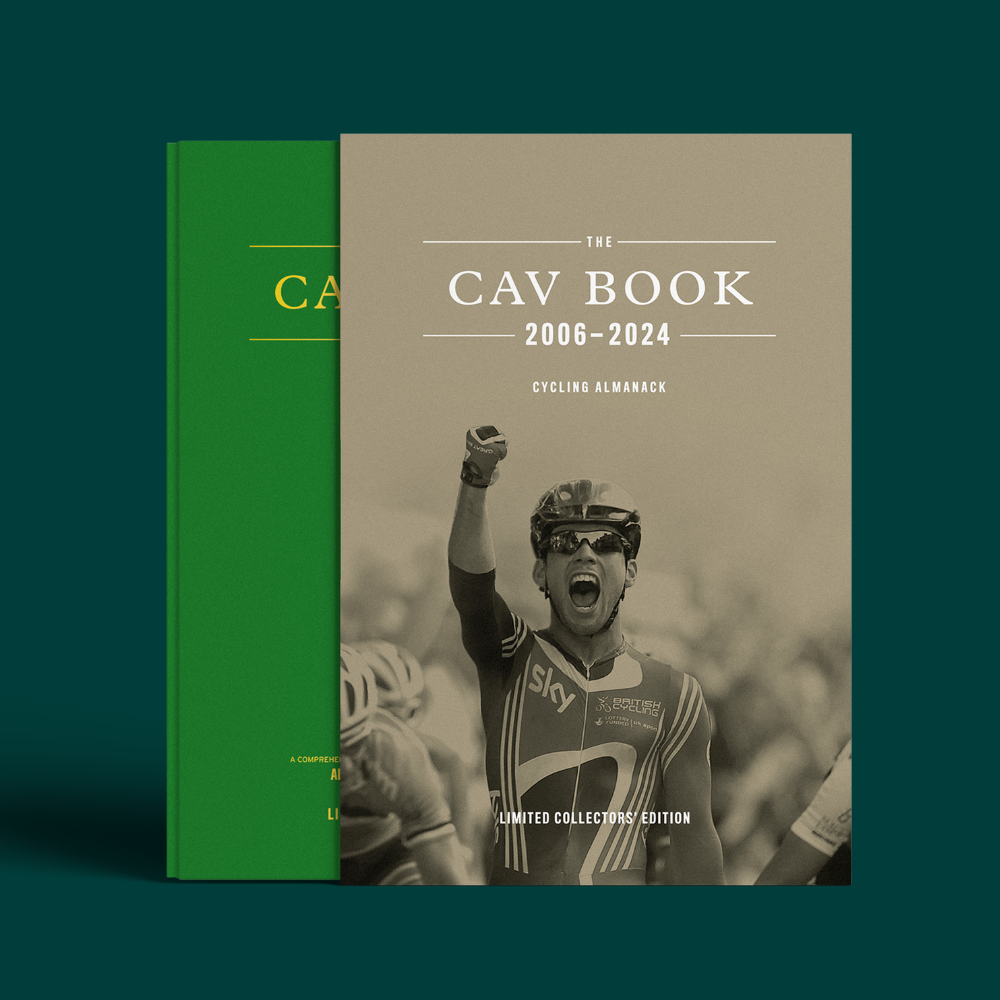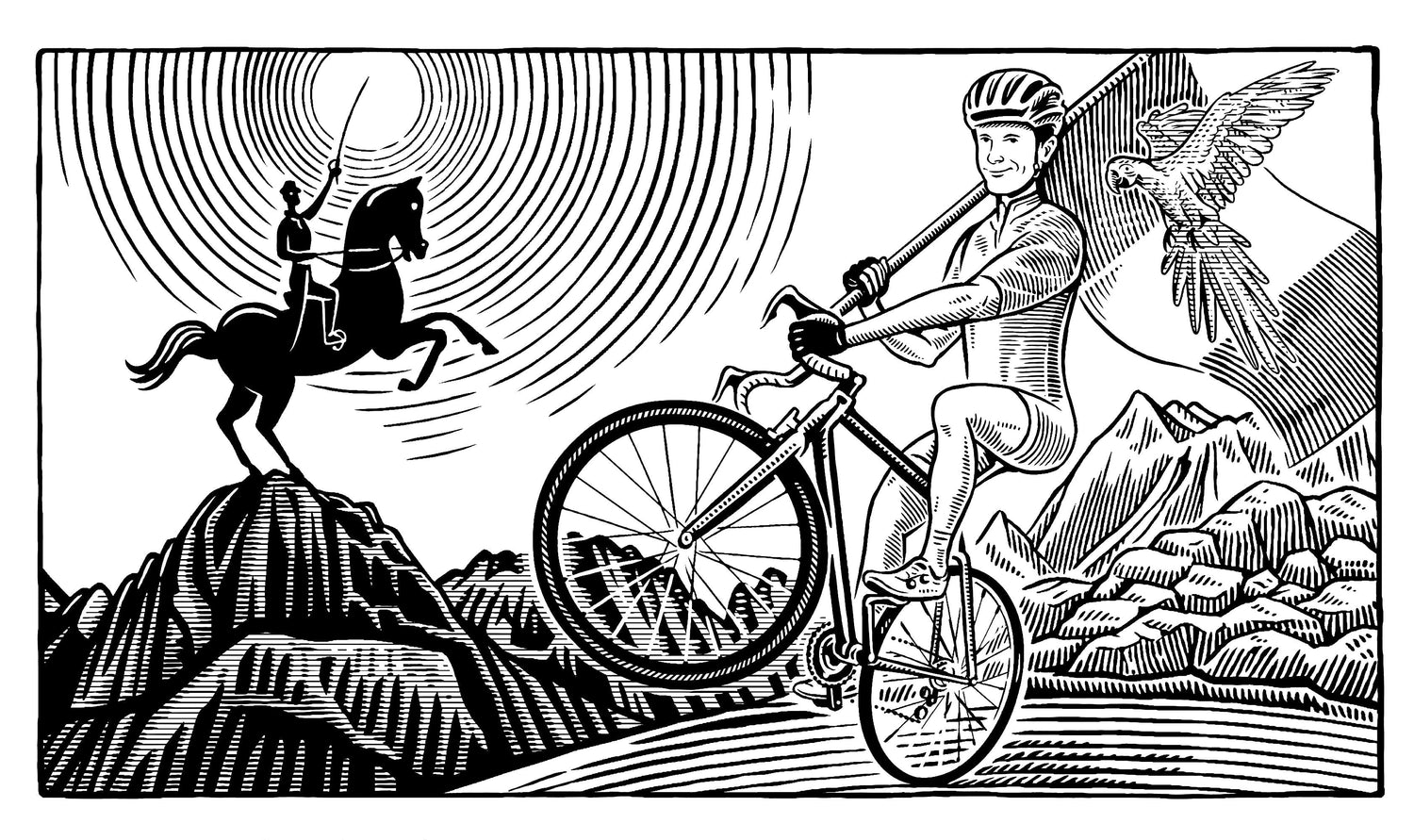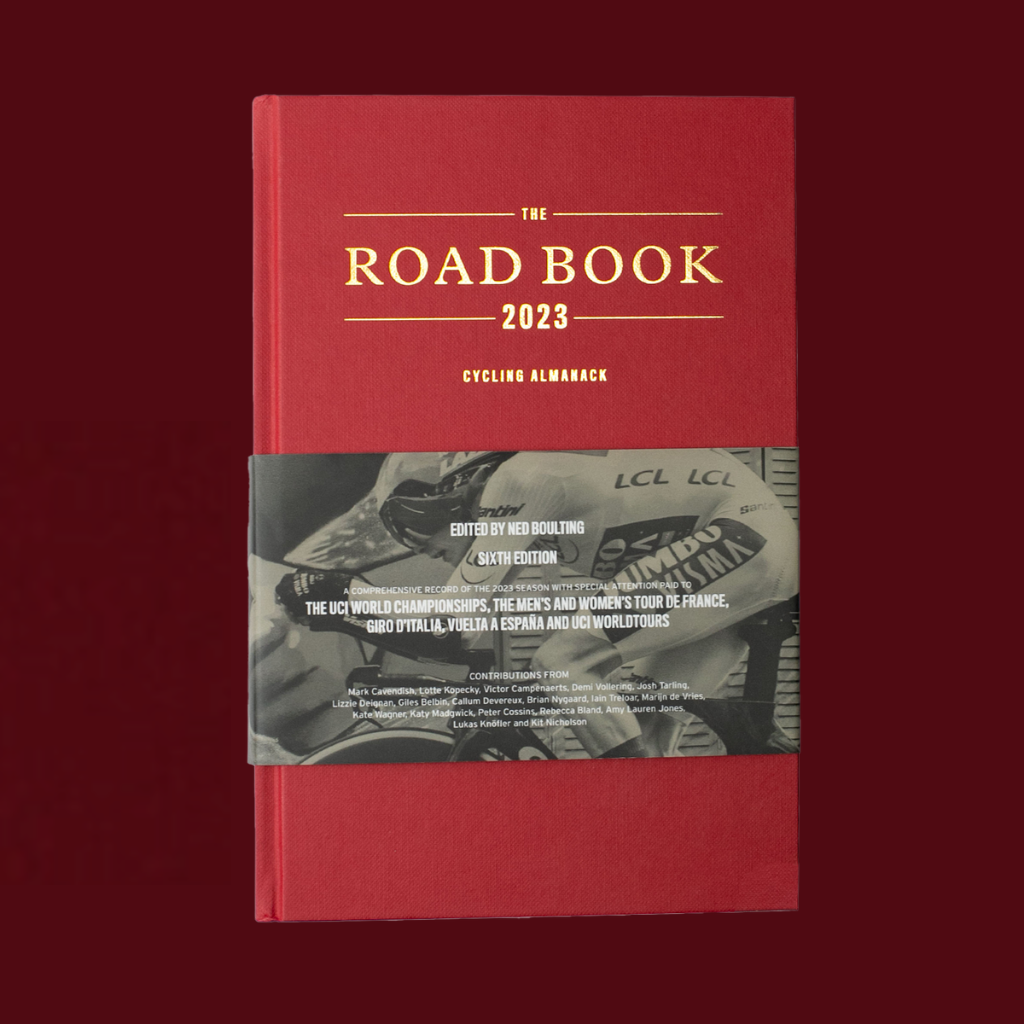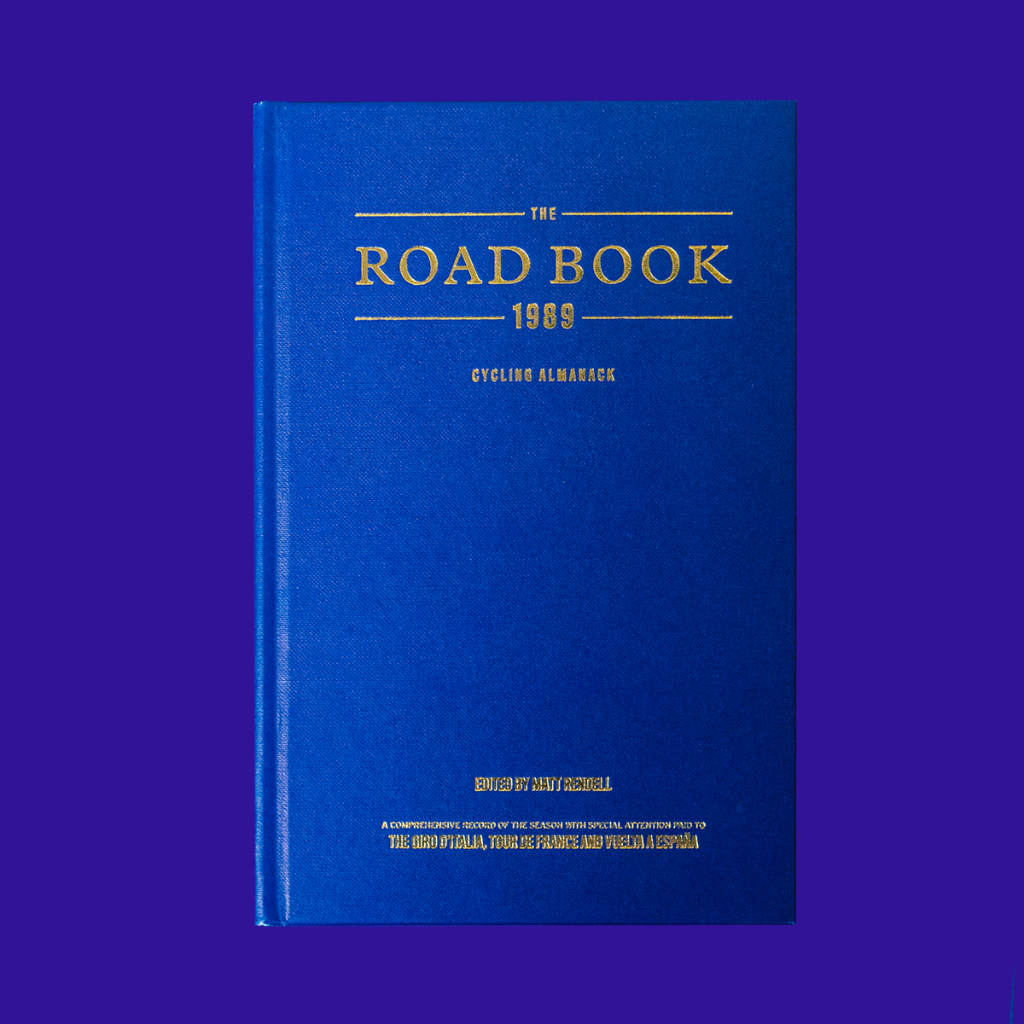The Road Book presents “The Red Line”: An alternative to a simple race report, bringing you regular impressions and musings to complement the racing calendar.
There was something a little bit dishonest about the Tour de la Provence’s Queen Stage on Saturday. Not because of anything that the riders did or didn’t do (I hope), but because of the way the race was branded. Mont Ventoux’s snow-locked summit was never going to be accessible to the race in the middle of February. Indeed, the organisers were lucky to get it as far up as Chalet Reynard. The problem with naming a stage finish after the most identifiable mountain in world racing, and then only taking it two thirds of the way up is that it leaves the viewer feeling a bit short-changed. The climb through the forest to Chalet Reynard is uninspiring, to be perfectly honest. The road is quite wide and rather straight. The forest is dark, even when not shrouded in fog as it was on Saturday. It’s actually just the bit of the climb that has to be got through before the race starts. Ventoux begins after you turn left and change direction at the overpriced café in the lay-by.
Not that any of these aesthetic qualms would have been of concern to Ivan Sosa, who adds his name to the list of “not really Mont Ventoux Mont Ventoux winners”, a club which includes Thomas de Gendt who went on to win the stage of the Tour that finished there in 2016 when Chris Froome was left without a bicycle in a bicycle race. That day a howling gale prevented the race from going higher.
It was good to see Sosa’s devastating attack produce a race win, and his extraordinary talent begin to come to fruition. It felt like an important moment in his career, and means that we must now consider him to be the rider we always knew he had the potential to be; namely, yet another potential Grand Tour winner to go with Ineos’s roster of proven champions Thomas, Bernal, Geoghegan Hart, Carapaz, as well as major talents like Porte, Martinez, Yates (A) and Sivakov. And Pidcock, too. Besides, I have a particular fondness for Sosa, having been invited into his parental house back in 2018 when I toured Colombia with fellow Road Book writer Matt Rendell, who was working on his forthcoming magnum opus Colombia Es Pasión. Sosa’s mother cooked us lunch, and his father showed us around the little farm where they grow beans other vegetables. Like almost all of the Colombian riders I’ve ever had the good fortune to meet, he’s a bright-spirited, open and immensely dedicated young man, who demands our respect.

But the real revelation of stage three was the immense contribution of Carlos Rodriguez, the Spanish climber who only turned twenty a couple of weeks ago. This is his second year with Ineos, though you’d be completely forgiven for not knowing that, such was his anonymity last year. But the pull he did on the front to set up Sosa’s attack and shred the group was as good as any seen from the Sky/Ineos domestique over the years. Watch out for his contribution as the season progresses. It could be considerable. And who knows what the future might hold for him.
Other than that, the race will be remembered fondly by Davide Ballerini, the winner of the first two stages, and wearer of the Mondrian-inspired leader’s jersey. Ballerini is a rider who at the age of 26, has now finally figured out who he is and what he does best: Turns out he’s a phenomenally talented and versatile sprinter, the kind of rider who can win bunch kicks and one day classics equally – in the mould of Alexander Kristoff or John Degenkolb perhaps.
Until his arrival at Deceuninck Quick Step he spent time working as a domestique for Astana or getting in doomed breakaways with Androni Giocattoli. Indeed the first time I became aware of him at all was in 2017 when he won the King of the Mountains classification at Tirreno Adriatico. I remember how he clinched the final points needed to win. He was in yet another breakaway, competing on a climb against his only credible rival Alan Marangoni. Meanwhile, 5 minutes back down the road the peloton had been held up by a level crossing. When this information was radioed up to the front of the race, it was the exact moment that Ballerini had just attacked Marangoni in the final few hundred metres of the climb. It was then that a race regulator on a moto rode up alongside Ballerini, within sight of the finish, and stopped him. He was instructed to wait until the peloton had started to move again. Fortunately, when the riders were waved off again Maragoni refused to contest Ballerini for the win, and, incensed with the ham-fistedness of the commissaires, the Italian rode clear to seal his victory. Funny how these things stick in the memory.
Anyway, it was a good race, capped off today by a relatively rare win from Phil Bauhaus, who’s another name to reckon with in a sprinter’s field which continues to intrigue. It’s hard to know these days with any definitive certainty who is the fastest rider in the world. It’s been that way for a while, since the distant domination of Cavendish, and then, perhaps more briefly, Kittel.
2021’s shaping up all right in this narrow sense at least. Thank God for road racing.
Ned Boulting



